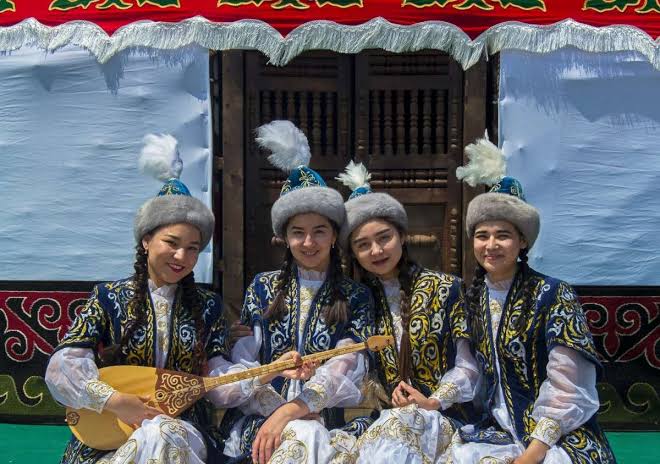Kazakh folk music stands as a testament to the rich cultural tapestry woven by the Kazakh people, natives of the Central Asian region. Rooted in a profound history, this musical tradition serves as a melodic chronicle, narrating tales of legends, fairytales, and epics through improvisational musical accompaniment.
The historical ties between Kazakh folk music and the country’s traditional folklore are robust, reflecting the nomadic lifestyle and cultural nuances of the Kazakh people. This musical genre seamlessly weaves influences from nomadic traditions, Islamic music, and neighboring cultures, creating a diverse and vibrant sonic landscape.
The thematic essence of Kazakh folk songs is deeply intertwined with nature, love, and the daily experiences of nomadic life. Sung predominantly in the Kazakh language, the melodies range from lively and energetic to slow and melodic, mirroring the emotional spectrum of the Kazakh people.
In recent years, there has been a remarkable resurgence of interest in Kazakh folk music, fueled by efforts to preserve and promote this cultural treasure. It is now a regular feature at cultural events, festivals, and traditional music ensembles. Moreover, contemporary musicians have ingeniously blended elements of folk music into modern compositions, offering a harmonious fusion of traditional and contemporary styles.

At the heart of Kazakh folk music lie its distinctive instruments, each contributing to the unique sonic palette. The kobyz, crafted from a single piece of wood with a horsehair resonator, the dombra—a two-stringed instrument with a drop-shaped resonator, the dabyl—a timpani-type percussion instrument, and the zhetygen—a seven-stringed, plucked instrument, all play integral roles in shaping the Kazakh musical landscape.
The genre of Kui, born between the 15th and 18th centuries, stands as a pinnacle of Kazakh musical expression. Performed on the dombra with special tonality and rhythm, Kui has found its maestro in the renowned Kazakh composer, Dauletgerey, who left an indelible mark on the 19th-century musical landscape.
As the 19th century unfolded, a cultural exchange between Kazakh music and the global musical sphere took place. Russian and European musicologists delved into Kazakh musical traditions, while Kazakh musicians explored diverse global styles. This period witnessed the emergence of influential figures such as Abai Kunanbayev, Kurmangazy Sagyrbayuly, and Ykylas Dukenov.
The early 20th century marked a significant chapter with the opening of a school of classical music in Kazakhstan. Folk orchestras, symphonies, opera, and ballet became integral to the musical landscape, fostering a synthesis of classical and Kazakh folk music. Simultaneously, efforts to preserve traditional Kazakh music were initiated, resulting in the recording of folklore-inspired works and collections such as “500 Kazakh Songs and Kuis.”
In the contemporary era, Kazakh folk music stands as a cherished cornerstone of Kazakhstan’s cultural heritage. Composers and musicians continue to create new works infused with folk motifs, ensuring the preservation of the nation’s musical history. The Museum of Musical Instruments in Almaty stands as a living testament, inviting enthusiasts and curious minds to immerse themselves in the captivating history of Kazakh music. As the melodies continue to resonate, Kazakh folk music remains a dynamic and integral part of the nation’s identity, echoing through the corridors of time.

Mr. Muhammad Ali Pasha is an analyst and expert on Central Asia, South East Asia, China, Türkiye and Middle East having experience in the field of article writing in various renowned journals and newspapers across the globe. Furthermore, he is a writer and poet.


